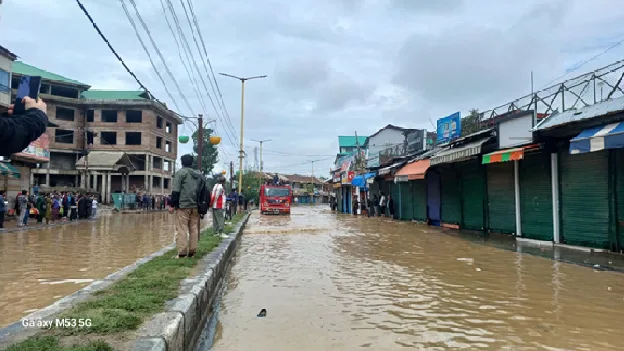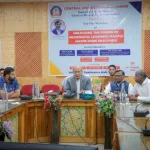Following the 2014 flood disaster, the government had announced a two-phase Flood Management Project (FMP) to increase Jhelum’s discharge capacity from 31,800 to 60,000 cusecs. Phase I, worth ₹399 crore, was to include major dredging and embankment reinforcement.
By 2025, however, only partial improvements had been achieved. While officials claim that Phase I dredging increased capacity to around 40,000 cusecs, critical bottlenecks in the Flood Spill Channel were addressed only in small stretches, such as Shariefabad and Naidkhai. Even the proposed ₹18,000 crore Dogripora–Wular flood channel remains unbuilt, stuck in committee reviews and file circulations.
“We’ve seen rescue drills, but not real upgrades,” said Mohammad Yusuf, a Kursoo shopkeeper. “A wall here, a channel cleaned there—this isn’t planning. It’s patchwork.”
A ₹46-crore dredging contract awarded in 2015 failed to clear even three lakh cubic meters of silt after nearly a decade. Reports admit that apart from “patch dredging” and limited repairs, no major systemic work has been executed.
Environmental solutions were sidelined as well. Wetlands, once natural sponges buffering floods, have shrunk. The fragmentation of Hokersar and the wiping out of water bodies worsened drainage. One civil engineer pointed out that small-scale storage basins on feeder streams cost-effective, multifunctional structures to moderate floods, recharge groundwater, and even support fish farming would have made sense, but were overlooked.
A government-appointed panel had recommended construction of a supplemental spill channel, zoned floodplains, more storage, and expansion of Wular Lake. None of these visionary steps have been implemented.
What happened to flood preparedness?

Aatif Qayoom is a Senior Correspondent at Rising Kashmir, covering crime, tourism, sports, and various social issues across Jammu and Kashmir. Known for his accurate and ground-based reporting, he highlights stories that matter to people.
Leave a Comment Leave a Comment





